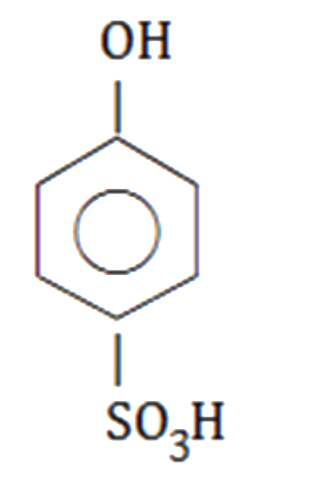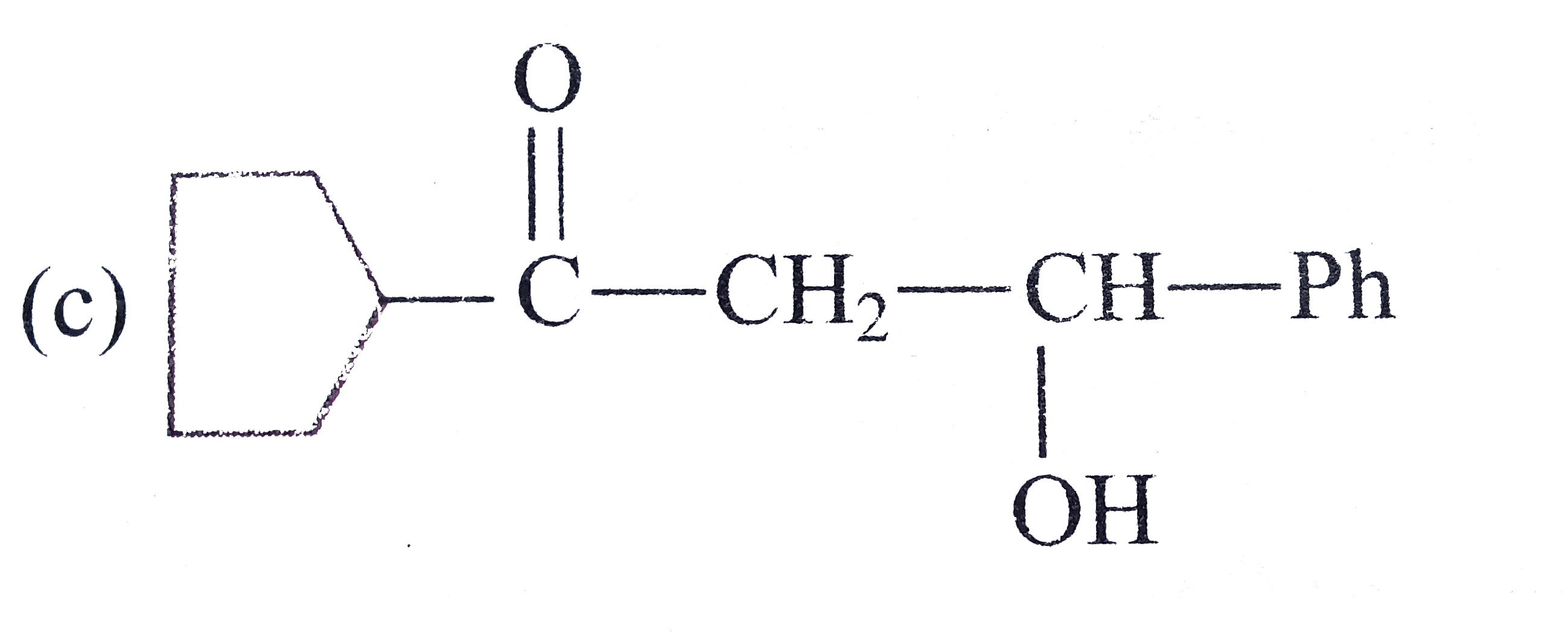In the given reaction
C6H5−OHH2SO4−−−→Xas major product(i)NaOH−−−−−−−−→Δ(Y)
'Y' is




The correct Answer is:C
To solve the problem step by step, we will analyze the given reaction and identify the major product (Y) formed after the reactions.
Step 1: Identify the starting compound
The starting compound is phenol, represented as C6H5OH.
Step 2: Reaction with H2SO4
When phenol reacts with concentrated sulfuric acid (H2SO4), it undergoes electrophilic substitution. The H2SO4 can introduce a sulfonyl group (SO3H) to the aromatic ring.
- The hydroxyl group (OH) in phenol is an ortho/para directing group, but because SO3H is bulky, it will preferentially attach to the para position due to steric hindrance.
- The product formed after this reaction (let's call it X) will be para-hydroxybenzene sulfonic acid, which can be represented as C6H4(OH)(SO3H).
Step 3: Reaction with NaOH
Next, the product X (para-hydroxybenzene sulfonic acid) is treated with sodium hydroxide (NaOH).
- In this step, OH− acts as a strong nucleophile and will attack the sulfonic acid group (SO3H), leading to the elimination of HSO−3 (the leaving group).
- The result of this reaction will be the formation of a compound with two hydroxyl groups, specifically para-dihydroxybenzene (also known as hydroquinone), represented as C6H4(OH)(OH).
Step 4: Conclusion
Thus, the final product Y is para-dihydroxybenzene.
Final Answer
The product Y is para-dihydroxybenzene.
---
The starting compound is phenol, represented as C6H5OH.
When phenol reacts with concentrated sulfuric acid (H2SO4), it undergoes electrophilic substitution. The H2SO4 can introduce a sulfonyl group (SO3H) to the aromatic ring.
- The product formed after this reaction (let's call it X) will be para-hydroxybenzene sulfonic acid, which can be represented as C6H4(OH)(SO3H).
Next, the product X (para-hydroxybenzene sulfonic acid) is treated with sodium hydroxide (NaOH).
- The result of this reaction will be the formation of a compound with two hydroxyl groups, specifically para-dihydroxybenzene (also known as hydroquinone), represented as C6H4(OH)(OH).
Thus, the final product Y is para-dihydroxybenzene.
The product Y is para-dihydroxybenzene.
Topper's Solved these Questions
Similar Questions
Give the structures of A, B and C in the following reactions :
(i) C6H5N+2Cl−CuCN−−−→AH2O/H+−−−−−→BNH3−−−−−→ΔC
(ii) C6H5NO2Sn+HCl−−−−−→ANaNO2+HCl−−−−−−−−−−→273KBH2O/H+−−−−−−−−→ΔC
View SolutionIdentify the major product in the following reactions :
C6H5−CH2−H∣C∣Br−CH3Alc.KOH−−−−−→Δ?HBr−−→ ?
View Solution
Knowledge Check

A+BNaOH−−−→Δ Product :A B
B C
C DPh−CH=CH−O∣∣C−Ph
DPh−CH=CH−O∣∣C−PhC2H5IAgNO2−−−→X. Here X(major product) is :
A BC2H5−O−N=OCC2H5−N=ODAll the above
BC2H5−O−N=OCC2H5−N=ODAll the aboveIn the given reaction :
Ph−C∣∣O−CHY3H2N−OH−−−−−−→(X)PCI5−−→Δ(Y)
Y will beAPh−C∣∣O−NH−CH3BH3C−O∣∣C−NH−PhCPh−CH2−O∣∣C−NH2DPh−CH2−CN
In the given reaction sequence C6H5−CH2−NH2CHCl3/Alc.KOH−−−−−−−−−−−→Δ[X]H2O/NaOH−−−−−−−→[Y],[Y] will be:
View SolutionIn the reaction sequence
C6H5CHONH2OH/H⊕−−−−−−−−→Δ(X)P2O5/Δ−−−−−→(Y)H2∅H⊕−−−−→(Z)
(X), (Y) and (Z) respectively be
View SolutionIn the reaction
CH3CN+2HHCl−−→etherXH2O−−→ΔY, Y is
View SolutionGiven the following sequence of reaction
CH3CH2INaCN−−−→AOH−−−−−−−−→PartialHydrolysisBBr2/NaOH−−−−−−→C
The major product 'C' is
View SolutionIn the sequence of reactions
C6H5BrMg−−→ether(X)(i)CO2−−−−−−→(iii)H3O+(Y) the product (Y) is
View Solution